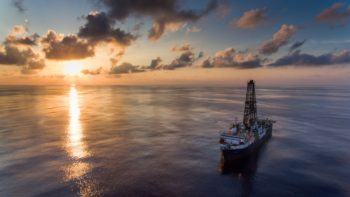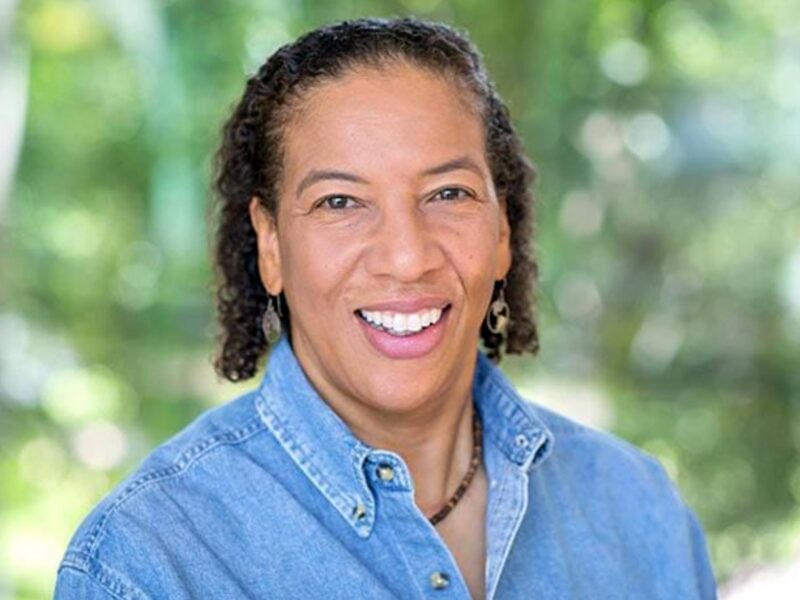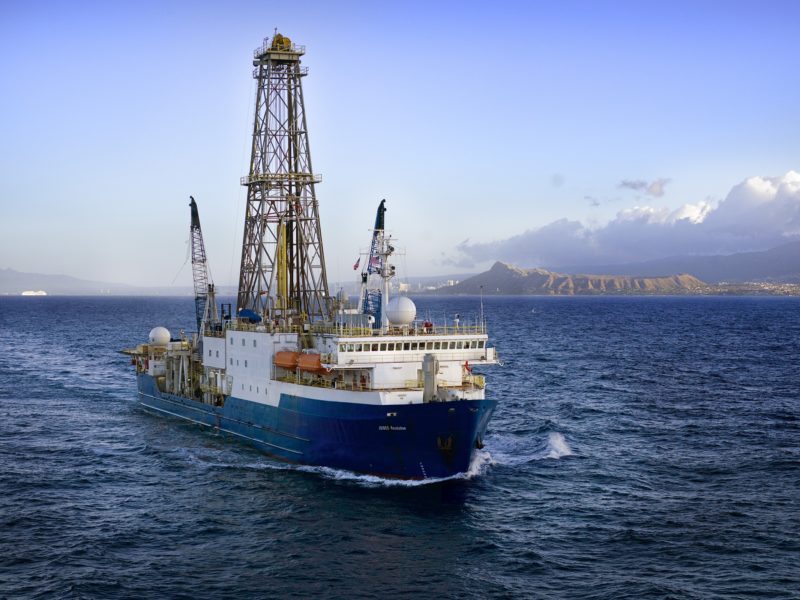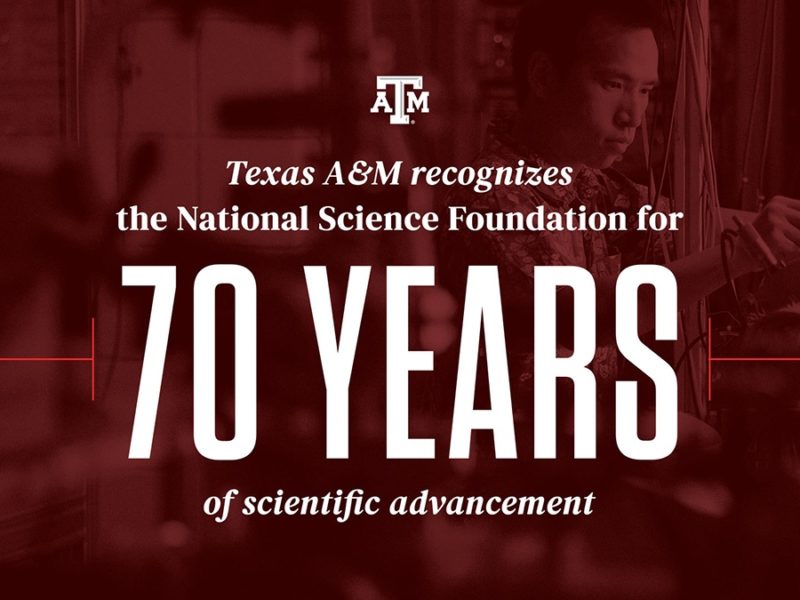NSF-Funded Deep Ocean Drilling Expeditions Will Be Led By Texas A&M Scientists

Drilling thousands of meters down into the ocean to sample and study deep ocean crust that is millions of years old, today the International Ocean Discovery Program (IODP) embarks upon a two-expedition scientific drilling project to the South Atlantic Ocean, with a Texas A&M University scientist at the helm of each expedition.
Funded by the National Science Foundation (NSF) and supported by 22 nations, IODP is a multidecadal research program that explores Earth’s history, ecology and structure recorded in the sediments and rocks beneath the oceans. These South Atlantic Transect IODP expeditions will sail on the JOIDES Resolution, a premier scientific research vessel for deep-ocean drilling, owned by Siem Offshore’s subsidiary Overseas Drilling Ltd. For the past 37 years, Texas A&M has operated the JOIDES Resolution on behalf of NSF.
Embarking April 12 from Cape Town, Jason Sylvan, associate professor and assistant department head in the Department of Oceanography at Texas A&M, and Rosalind M. Coggon, of the University of Southampton, UK, will serve as co-chief scientists of IODP Expedition 390 through June 7.
“It is incredible to see it finally happening after all the preliminary work, pandemic-related delays, and shuffling of personnel,” Sylvan said. “But here we are, sailing with scientists from all over the world and asking exciting questions about changes in Earth’s environment during the last 61 million years.”
Then, IODP Expedition 393 will sail June 7 – Aug. 7 with Julia Reece, assistant professor in the Department of Geology and Geophysics at Texas A&M, and Damon A. H. Teagle of the University of Southampton, UK, serving as co-chief scientists.
“The two expeditions are critical for our understanding of the interconnected Earth system such as the relationships between lithosphere, hydrosphere, atmosphere, and biosphere,” Reece said. “Drilling in this very systematic way along a transect perpendicular to the mid-ocean ridge axis allows us to investigate how the oceanic crust and everything around it changes as it cools, sinks, and ages over millions of years. By studying these sediments and igneous rocks that record environmental conditions and rapid climate change in the past, we will be able to better predict our planet’s future, including how subseafloor life, ocean circulation patterns, climate, etc. may respond to further anthropogenic influences.”
Expeditions 390 and 393, together referred to as the “South Atlantic Transect,” will recover deep geologic core samples from six drill sites along the western flank of the Mid-Atlantic Ridge, in water depths ranging from 3,000 – 5,000 meters and with ocean crust up to 61-million-years-old. Crust at these sites has been transported progressively westwards as a result of seafloor spreading from the mid-ocean ridge. These sites will fill critical gaps in the sampling of ocean crust with regards to crustal age, spreading rate, and hydrothermal and geochemical processes.
“It is exhilarating to follow the path of the scientific ocean drilling pioneers who explored the South Atlantic over 50 years ago to prove that seafloor spreading along the mid-ocean ridges produces new oceanic crust,” Coggon said. “That crust forms the basins that hold the oceans – but it is not simply an inert container for the seawater. Our strategy of drilling along a crustal age transect has been designed to investigate how seawater and the rocks that hold it interact – contribute to and record changes to the long-term evolution of our planet and allowing life to thrive deep beneath the seafloor.”
Carrying 52 international scientists, these two expeditions will recover sediment records of climate change and ocean circulation patterns in the Atlantic Ocean, investigate the history of hydrothermal interactions between the cooling ocean crust and the ocean, and the microbial communities that live deep beneath the seafloor.
Sediment cores that span both space and time will allow scientists to investigate the responses of Atlantic Ocean circulations patterns and Earth’s climate system to rapid environmental change – including through past intervals of elevated atmospheric CO2.
In addition to serving as the science operator of the JOIDES Resolution, Texas A&M also houses one of IODP’s three main ocean sediment core repositories.
Learn more about IODP, and follow the expeditions on Twitter, Facebook and Instagram.





